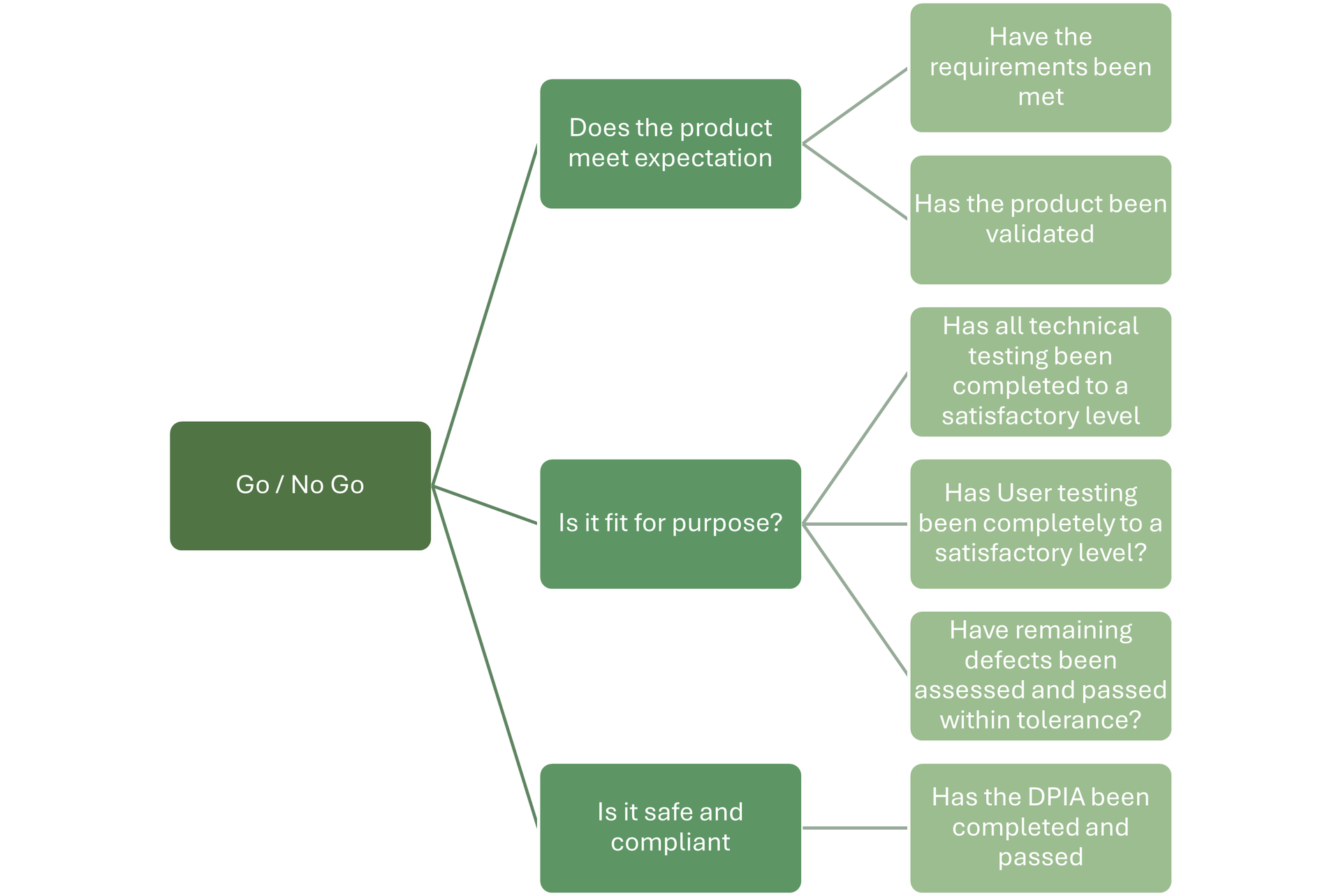Passport to Live

Passport to Live
That’s what I call it. How do you give your stakeholders the confidence to say yes for a Go Decision. It’s my term for business and technical readiness, release management, Go/No Go, project readiness review, gate review, I’m sure there are many other terms used. I like the term ‘Passport to Live’, it’s a simple metaphor for people to understand that to get to the required destination successfully and safely, FOR ALL, there are some checks and validations that need to be met. The reason I capitalised ‘for all’ is that this is not just about making sure the product (or service) is ready, but also to ensure that the environment in which the product lands is not adversely disrupted. Think about those items that you can’t take to some countries to protect the ecosystem. Passport to Live is about engaging all participants.
So how does Passport to Live (P2L) work?
Here are the golden principles for a successful Passport to Live process:
1. Early Start:
Start the process as early as possible into your project. For me, preparing for the launch happens in parallel to creating the product. By doing this you are mitigating risk from the beginning and keeping your eye on the end goal.
2. Clear Accountability:
The overall P2L process is managed by a dedicated facilitator, while the specific activities within it are owned and managed by designated individuals.
3. No Surprises:
Prepare your decision-maker/s along the path. The first time that they look at the passport should never be at the point of making the decision. The whole point of P2L is to provide confidence and to make the final decision simple and firm.
The general premise of P2L is that there are 6-8 focussed, headline questions or checks that need to be answered to enable the Go (or No Go) decision. Below is a starter list that you can tailor for your own needs.

These questions ensure comprehensive coverage of technical, compliance, and operational aspects.
The idea is that if you have the affirmative answers to these questions, with the appropriate provenances, you should have the confidence to stamp the passport and to go through the gate.
Confidence is the key word here. The overall accountable person need to be certain that, within an agreed level of risk, they are giving a safe go decision. Passport to Live provides the assurance that all the critical points have been addressed in a comprehensive and controlled manner.
Let’s return to those questions, because let’s face it, they are both simple and complex. To be able to say ‘yes’ to each question, there are likely several components that need to be answered.

For each of these sub questions, there should be a link to the appropriate evidence, like a Test Completion Report, for example.
Distributed Accountability
‘Thorough scrutiny and collective responsibility’
The final decision to ‘Go Live’ is taken by the assigned governing body, relying on the assurances provided by the owners of each check.
For example, the Project Board relies on the Test Manager who reviews the output from the testing team/documentation and reports on the results.
What we see now is a clear path;
‘Yes, we can go live
Because all the core checks have been passed
Which includes that the product is fit for purpose
As all the testing checks have been satisfactorily completed.
And here’s the evidence to prove it.’
By setting up the P2L process early, you have provided yourself with a great way of checking progress addressing blockers, and limiting surprises just before you go live. If you add updates and RAG on progress for each of the elements in your P2L, you’ve got yourself some great instant reporting and a central collaboration point. Set up regular check-ins for the project team, introduce the P2L dashboard to your governing body as a standard agenda item and perhaps provide a clear escalation path. Have a standard P2L template; these are all ways that you can embed this process and make it ‘business as usual’.

As a project/programme manager you are helping your stakeholders to feel confident about progress and allowing them to focus on where their help is required. You are ensuring that go decisions are based on the whole picture. You are confirming that your passport is up to date and in good health to go through the boarding gate.
Benefits
- Early P2L implementation allows for early risk identification and mitigation, reducing last-minute surprises.
- The process provides structured reporting and central collaboration, aiding stakeholders in focusing their efforts effectively.
- At the portfolio level, consistent P2L practices help balance release schedules and implement improvements efficiently.
So, there you have it, my model for making a confident Go/No Go decision. I’ve used it in several organisations now, sometimes it’s called something different, the formatting changes but the principles remain the same. It’s been used by me and adopted by others with success. What I have witnessed every time the P2L is used is a calm and confident decision being made at the Go/No Go gate. Just don’t forget to apply the principles!
Remember, this is a process, not a last-minute check. It consolidates all the activities required for a confident Go decision. While one person facilitates the P2L process, the accountability and responsibility lie with all component teams and individuals.
Now grab your passport and fly!











